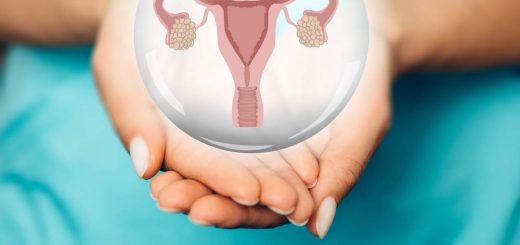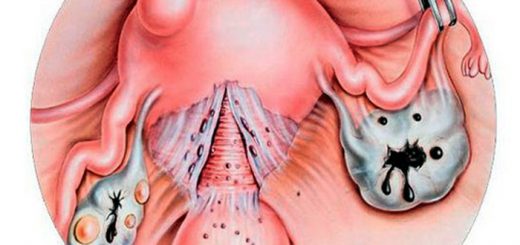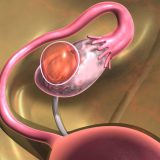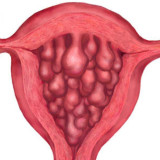Fortunately functional ovarian cyst are among diseases that go by themselves with time in most cases. But women still need to monitor the cysts development to prevent complications. Besides, in some cases treatment is required. So what are the indications to visit the doctor?
Functional ovarian cyst symptoms
As in most ovarian cysts cases, functional ovarian cysts do not cause any visible symptoms. They are usually diagnosed accidentally during medical ultrasound. Functional ovarian cysts symptoms appear if this formations becomes large. The discomfort is associated mainly with the pressing on the tissues or organs.
Symptoms in this case are the following:
- First, as a rule, there are pains in the abdomen or groin. It should be noted that pain is usually localized on the part of the ovaries. Discomfort may have varying degrees of intensity and frequency. Some women suffer from chronic pain, while others notice them only occasionally. As the cysts grow, the feeling of pressure at the bottom of the abdomen and groin becomes more intense.
- Irregular, late, painful menstruations.
- Bleeding between menstruations.
In any case, the presence of these symptoms is the reason to visit the doctor. And the earlier the problem is detected, the easier it is to treat it.
What functional ovarian cysts complications are possible?
As it was mentioned, the small size of the cyst is not a threat to the women’s health. However, if the diameter of the tumors reaches 5-7 cm, it becomes dangerous. What are the associated risks? There are several major functional ovarian cysts complications .
Torsion
The common result of the untreated cyst is the twisting or torsion cysts. This condition is usually accompanied by sharp abdominal or groin pain. It intensifies during walking, running, jumping, sexual intercourse and other physical activity. But if the patient is put on side (the one where the affected ovary), the condition is improving slightly.
Necrosis
Such functional ovarian cyst complication is extremely dangerous, the woman can even lose the ovary. Ovary tissue necrosis is a gradual loss of the ovary cells. It happens because of the torsion, when blood can not get into the organ.
In addition cyst necrosis can be accompanied with severe intoxication – persistent fever, aches and pains in the body, weakness, dizziness, confusion, and so on.
Rupture
What more, we should not exclude the probability of the cyst rupture. This complication is very dangerous, because it leads to release of its contents in the abdomen cavity. This, in its turn, cause rapidly progressing peritonitis. The patient in this condition should be immediately taken to the surgical ward. Without professional medical care there is high risk of death.
What are the symptoms of ruptured functional ovarian cyst?
First of all there is a sharp, almost unbearable “knife-like” pain in the abdomen. The abdomen of the patient, as a rule, strongly strained. In some cases atypical vaginal discharge appears.
In addition, the symptoms include fever, which can not be solved by conventional antipyretic drugs. A woman complains of weakness and lethargy. There may be nausea and vomiting. The skin of the patient pales, the pulse becomes weak, and the blood pressure drops sharply. In severe cases, there are a variety of disorders of consciousness.
Another, no less dangerous manifestation of the complication is bleeding. In some cases, it is small, and women do not even pay attention to the spotting. But sometimes the rupture can cause life-threatening bleeding.
Diagnostic methods
The disease can be detected only by attending gynecologist. The doctor can find out the presence of the large cysts during routine gynecological examination. But smaller cysts can be seen only on medical ultrasound of the pelvic organs. This procedure helps to determine the number of lesions, their size and exact location.
In some cases, even after medical ultrasound additional tests are required to make right diagnose. Because it is not always possible to determine whether the detected structures are benign. Biopsy is often used for this purpose. The doctor removes tissue samples during laparoscopy, and then it is sent to laboratory.
Functional ovarian cysts treatment
After the diagnostic is made, the doctor choose treatment method. Which therapy does functional ovarian cyst require? The treatment in this case depends on the size of the tumor, its development dynamic, as well as the presence of certain complications.
For example, a single small tumor does not require specific treatment. As a rule the doctor let the cyst to disappear by itself and monitor its development for some time. In some cases, hormonal treatment, including modern contraceptives, is also used during the monitoring period.
Surgical removal
Unfortunately, not every case of conservative treatment gives the expected effect. In this cases surgery helps to get rid of the tumors.
Puncture
If you have the small cyst, it can be removed with puncture. During this procedure the doctor use a long needle and through a puncture of the abdominal wall extracts the liquid contents of the neoplasm. Liquid subsequently is sent to a laboratory for studying. Cyst walls are glued together.
By the way, this procedure always involves some risk. That’s why this method is used only if the likelihood of the successful result is high.
Laparoscopy
Most often laparoscopy is used as the treatment, especially in case of large sized cysts. This technique has several advantages. The main advantage is about hight probability of the successful treatment. In addition, only the two small incisions is necessary to carry out the procedure.
Laparotomy
Only in most severe cases laparotomy is required. It is a full abdominal surgery. The indications for this procedure is the presence of really large tumors, suspected malignant degeneration of tissues, as well as cysts rupture, severe inflammation accompanied by suppuration.
Only this kind of surgery gives the doctor a complete overview and allows to solve the main problems and its consequences.
















